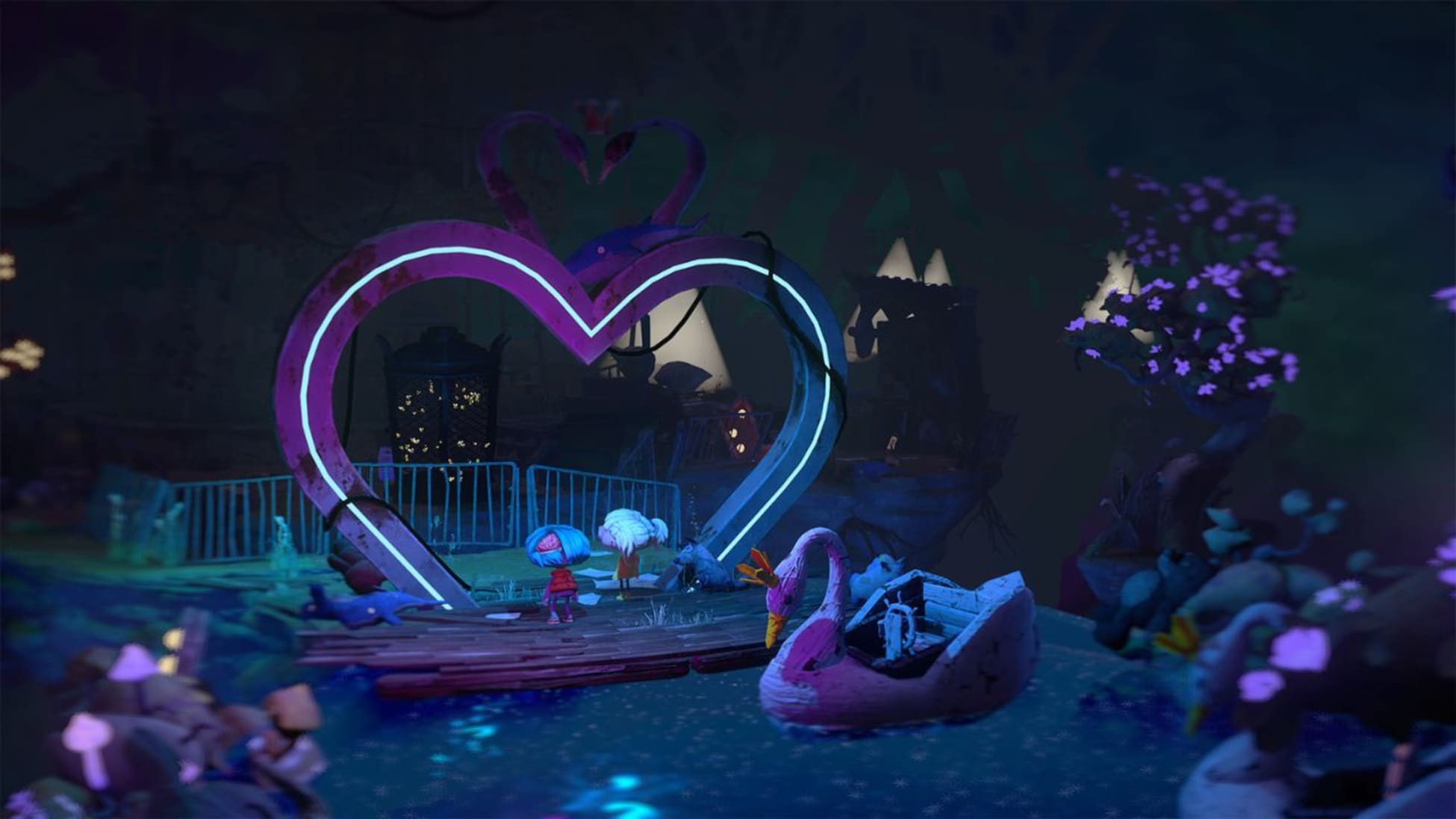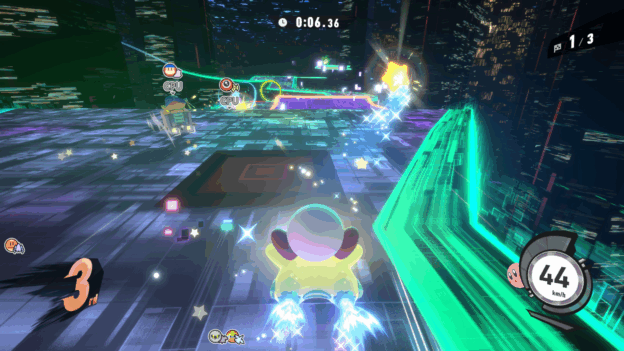Saga Frontier 2 Remastered Review – Review

A generation-spanning saga filled with joy and rage.
I have a sordid history with role playing games. Like so many others of my generation, I cut my teeth on Final Fantasy VII, an RPG in retrospect was approachable and could be conquered, even if you don’t engage entirely with the systems. There’s a graveyard of games I abandoned unfinished either due to a skill issue or my general impatience. Octopath Traveler couldn’t keep me, even with its vaunted “2DHD” graphics. I got sucked into the TVs and awoke in Persona 4 before turning off my actual television. Despite my best efforts, the only Xenoblade Chronicles game I’ve stuck with is Xenoblade Chronicles X, but we’ll see if I can last long enough to get a mech. There was always one which hung over my head like an unfinished homework assignment, and that was Saga Frontier 2. In 1999, a young me got stymied by this game I bought on a whim, but thanks to the recent Saga Frontier 2 Remastered I’ve gotten the chance to take a second bite at the apple.

Saga Frontier 2 is a story spanning across multiple generations and reads almost more like a history book rather than a personal story arc. Primarily it’s a story of two families with separate chronologies that have temporary weaving of events but rarely have any bearing on each other. Gustave, heir to the throne in the house of Finney, is found to have no anima – the source of magic and lifeblood of the world and is exiled along with his mother into obscurity. Wil Knights, a quell hunter seeking riches and fame, stumbles upon an artifact (they refer to it as the egg) that brings with it the potential annihilation of the world. Like any good RPG the personal story turns into civilization-altering events, but this is a game that has more focus in the macro than the micro. The game is broken into chapters selected from a world map, with the year the event took place and which key character the story is focused on. While the story and gameplay are linear, deeper into the game there are multiple arcs you can pick and choose from. I found myself diving into Gustave’s story beats until being forced to jump back to Wil’s, which had the funny side effect of getting several years into the future for one, then having to jump back in time to get the Wil storyline current. Sometimes it messed with how I viewed the chain of events, but I welcomed the option to follow the story as I saw fit. Even through this narrow personal chain of events the cast of characters grew on me and the long-time arc gave me reasons to feel invested in their progeny.
That chronological structure has implications for gameplay as well. The chapters can vary wildly in size and scope. Some have large dungeons to explore, and others are focused on exploring towns and solving puzzles. There are even ones fully story focused on story that are unplayable, and your only role is to watch the scenes unfold. Why those couldn’t be included with another chapter’s events or have its own related activity I don’t know, but there were more moments of “wait, that’s it?” I was hit with than expected. The dungeons themselves are fine, but there aren’t any I found particularly unique, and, in some cases, I found myself stuck in loops trying to figure out where to go next. The points of entry to different sections of the dungeon were often obscured because of how the scenes visually melded together. The game knew this, as there are arrows where the entry/exit points are of a screen, but the choice of grey for those arrows made it tough to even notice them at times. The difficulty spikes follow this kind of whiplash, especially in the second half when getting winnowed toward the end confrontations. In one case it took me several hours to get past a chapter because of a scenario with several potential win conditions that in truth only has one path for someone not fully attuned to the systems and how to game that encounter. There were also a few points where I feared getting soft locked in a spot where I was running out of ways to survive against truly imposing monsters, even in cases where I’d spent a healthy bit of time grinding for experience.

The combat system is what really drew me into Saga Frontier 2and remains one of its best features. Getting experience in battle increases proficiency in the weapons and spells you use, not a pure level increase with stat boosts. When you use a weapon or magic spell long enough the characters will get a light bulb over their head and attack with a new move called arts, which then can be used in their arsenal. Each character can have several arts assigned to their move set, provided they are equipped with the right weapons or items imbued with the necessary magical properties. Most weapons have degradation after several uses, but they can be repaired at different towns or new ones can be bought outright. It’s nice being able to maintain a weapon that’s powerful, at least when I remember to save it. Each move costs weapon points (WP) or spell points (SP) to perform, and each character has a pool of these points based on their proficiency and what they have equipped. Intertwined with that and health are life points (LP). LP is a separate meter that can function as an option to heal in between rounds of a battle and as a replacement for WP or SP if those meters ran dry and you haven’t quite taken down that monster yet. If you lose all your health and are out of LP, then it’s game over. Unlike WP, SP, or HP, I had not found a way to restore them besides sleeping at an inn or once a chapter ends. Early on it’s an easy switch to flip when you’ve been hit heavily and have minimal healing spells, but it’s a trap in late game when going through the churn of pushing against wave after wave of basic monsters that have life-ending power, so proceed with caution.
Another layer of combat is duels. When you encounter enemies, there’ll be times where you’re presented with the option of either fighting as a team or choosing one of your teammates to solo them. Instead of having the arts listed, there’ll be basic actions like charge, focus, backslash, throw, and you’ll select four of them. Chaining together the right sequence of actions will then trigger the art, or if you didn’t do the right sequence, ends in a series of weak basic attacks. In the menu, each art has the order of actions to trigger them in duels, but you can’t pull this information in-battle so make sure to write it down or have a guide handy. The duels have a different kind of push-and-pull than standard battles in that being able to pick the right “ingredients” lets you pick from a wider range of attacks than what’s equipped. Not only that, but in my experience, it seemed that the arts were discovered more plentifully in choosing to duel. The duels were also a great help in cases where I knew the right script for my character and could brute force my way through segments when my characters were appropriately leveled but I was working my way through being lost, or in a situation where I was close to breaking one of my party members’ weapons and wanted to preserve it for bigger battles. This kind of variability and customization kept the fighting fresh, even in the face of mundane dungeons themselves.

This remaster does include some additional content and special features, though. Mercifully, there is an option to double speed of combat and movement. Moving through the world at double speed, especially when monsters roam there, felt unwieldy, but double speed combat is a huge boon to pacing. The combat is slow as molasses in default. Slow might be generous, it’s more that the default pace brings things to a grinding halt. Toggling speed boosts on and off made me wonder how I had the patience to play this game if I did it on Playstation. One stumble in special features is in difficulty features. Saga Frontier 2 has a wild difficulty curve, often whiplashing from chapters where combat is a breeze and others are a grueling gauntlet where even the basic dungeon monsters are team destroyers. Especially at the end, a strategy section akin to Fire Emblem is infamous in the online community as a point where people get stuck, and the final chapter is riddled with opportunities to get stuck with no way to reasonably get over the finish line. They include a minigame Go! Go! Digger, which is an addition from an old Pocketstation accessory that can yield special weapons & items, new game +, and an inheritance system which allows you to transfer stats from character to character. That said, there would have been some real value in including things like invincibility, max damage, max life toggles for those who were interested in the game but didn’t know exactly what they were signing up for.
Grievances about dungeon visibility and eclectic difficulty aside, Saga Frontier 2’s art direction is gorgeous. The remaster was advertised as having enhanced graphics, and while the character models themselves haven’t changed much, making a side-by-side comparison it’s clear there’s been work in cleaning up some rough edges and making the colors really pop on screen. There are some beautiful scenes with wide backdrops and blooming with color that can give pause, even when some of the stubby looking characters are in the foreground. The musical score has a few powerful melodies that are interwoven and reprised several times over depending on the tone of what’s happening or if a critical story beat is taking place. Somehow rather than the limited melodies getting dull or repetitive, each rendition felt like its own song, and I’ve grown an even more appreciation to the attention given to these pieces, and it may be the strongest part of the game.
Saga Frontier 2 Remastered is a unique, complicated relic of its time. A compelling cast of characters in a game that gives you glimpses of their personal struggles while focusing more on the long arc of history. A fresh feeling, flexible combat system tied to a series of dungeons that are thematically interesting but fundamentally humdrum. Special features and additions to this remaster that highlight its beauty, give better accessibility to weapon stocks, and give the tempo a much-needed speed boost, but feels incomplete compared to its remaster contemporaries. Ultimately, I had a gratifying experience playing this game in full and checking it off my bucket list, but it’s a game which should be seen more as an incremental improvement and way to preserve it on modern consoles than something that’s likely to draw in a new crowd.




